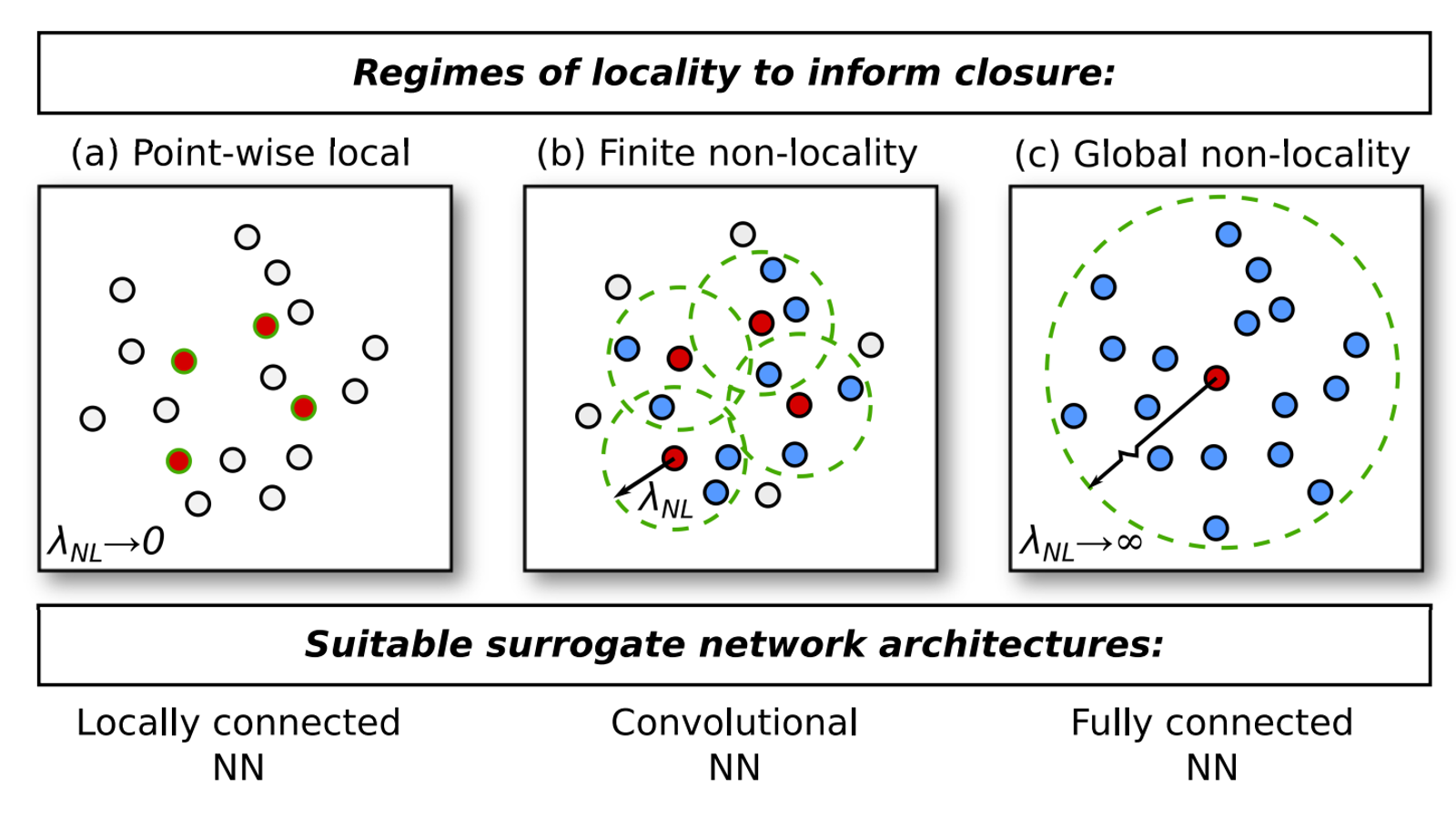Fully ionized plasma fluid model closures
Fully ionized plasma fluid model closures (Argonne):1 The closure problem in fluid modeling is a well-known challenge to modelers aiming to accurately describe their system of interest. Analytic formulations in a wide range of regimes exist but a practical, generalized fluid closure for magnetized plasmas remains an elusive goal. There are scenarios where complex physics prevents a simple closure being assumed, and the question as to what closure to employ has a non-trivial answer. In a proof-of-concept study, Argonne researchers turned to machine learning to try to construct surrogate closure models that map the known macroscopic variables in a fluid model to the higher-order moments that must be closed. In their study, the researchers considered three closures: Braginskii, Hammett-Perkins, and Guo-Tang; for each of them, they tried three types of ANNs: locally connected, convolutional, and fully connected. Applying a physics-informed machine learning approach, they found that there is a benefit to tailoring a specific network architecture informed by the physics of the plasma regime each closure is designed for, rather than carelessly applying an unnecessarily complex general network architecture. will choose one of the surrogates and bring it up an early example for SBI with reference implementation and tutorial documentation. As a follow-up, the Argonne team will tackle more challenging problems.

Figure 1: Simple schematic of varying classes of closure formulations.
References
R. Maulik, N. A. Garland, X.-Z. Tang, and P. Balaprakash, “Neural network representability of fully ionized plasma fluid model closures,” arXiv [physics.comp-ph], 10-Feb-2020 [Online]. Available: http://arxiv.org/abs/2002.04106 ↩︎